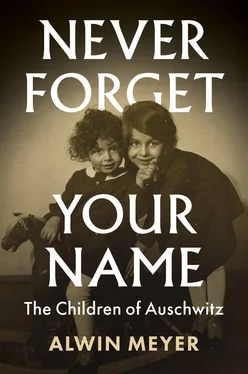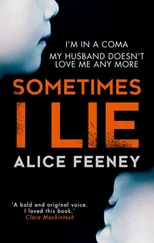1 1 Leni Yahil, The Holocaust: The Fate of European Jewry, trans. Ina Friedman and Haya Galai (Oxford 1990), pp. 53–4; Reinhard Sturm, ‘Zerstörung der Demokratie 1930–1933’, in Bundeszentrale für politische Bildung, ed., Weimarer Republik, new revised edition (Bonn, November 2011), pp. 54–73; Martin Gilbert, The Holocaust: The Jewish Tragedy (London 1986), pp. 30–1.
2 2 Helmut Eschwege, ed., Kennzeichen J – Bilder, Dokumente, Berichte zur Verfolgung und Vernichtung der deutschen Juden 1933–1945 (Frankfurt am Main 1979), pp. 36–7; Gutman, Holocaust, vol. I, pp. 234–7.
3 3 Wolf Gruner, The Persecution of the Jews in Berlin 1933–1945: A Chronology of Measures by the Authorities in the German Capital, trans. William Templer (Berlin 2009), pp. 59–60.
4 4 Barkai et al., ‘The Organized Jewish Community’, in Barkai et al., German-Jewish History, vol. IV, pp. 95–6.
5 5 Michael Berger, ‘“... liebt nächst Gott das Vaterland” – Jüdische Soldaten und ihre Rabbiner im Ersten Weltkrieg’, in Der Schild (published by the Bund Jüdischer Soldaten), 1, 1 November 2007; S. Neufeld (Ramat Chen), ‘Die Frühvollendeten’, in Hugo Gold, ed., Zeitschrift für die Geschichte der Juden, 2/3 (1970), pp. 87–8; see also Peter C. Appelbaum, Loyalty Betrayed: Jewish Chaplains in the German Army During the First World War (London 2014).
6 6 ‘Die Juden ziehen dahin, daher, sie ziehen durchs Rote Meer, die Wellen schlagen zu, die Welt hat Ruh’; ‘Wenn das Judenblut vom Messer spritzt, geht’s noch mal so gut.’
7 7 Reinhard Rürup, ed., 1936 – Die Olympischen Spiele und der Nationalsozialismus, 2nd edition (Berlin 1999), pp. 131–41.
8 8 Hermann Kaienburg, ‘Sachsenhausen – Stammlager’, in Wolfgang Benz and Barbara Distel, eds., Der Ort des Terrors – Geschichte der nationalsozialistischen Konzentrationslager, 9 vols. (Munich 2005−9), vol. III, pp. 18–21, 28.
9 9 Rose, ‘… täglich vor Augen’, pp. 65–8; see also Johannes Heesch and Ulrike Braun, Orte erinnern – Spuren des NS-Terrors in Berlin, 2nd revised edition (Berlin 2006), pp. 89–95.
10 10 Gruner, Persecution, p. 117.
11 11 Spector, ed., Jewish Life, vol. I, p. 128.
12 12 Gruner, Persecution, pp. 116–17.
13 13 Joseph Walk, ed., Das Sonderrecht für die Juden im NS-Staat – Eine Sammlung der gesetzlichen Maßnahmen und Richtlinien – Inhalt und Bedeutung (Heidelberg and Karlsruhe 1981), p. 255.
14 14 Wolf Gruner, Jewish Forced Labor under the Nazis: Economic Needs and Racial Aims, 1938–1944 (Cambridge 2006).
15 15 Gruner, Persecution, p. 118.
16 16 Israel (Jürgen) Loewenstein, ‘Ich habe ein Zuhause gefunden’, in Evangelischer Arbeitskreis Kirche und Israel in Hessen und Nassau, ed., ‘Wer hätte das geglaubt!’ – Erinnerungen an die Hachschara und die Konzentrationslager (Heppenheim 1998), pp. 28–32.
17 17 Leo Trepp, Die Juden – Volk, Geschichte, Religion (Wiesbaden 2006), pp. 304–5.
18 18 Loewenstein, ‘Zuhause’, p. 28.
19 19 Barkai et al., ‘Population Decline and Economic Stagnation’, in Barkai et al., German-Jewish History, vol. IV, p. 33.
20 20 Gutman, Holocaust, vol. I, p. 200.
21 21 Gruner, Forced Labor, p. 212.
22 22 Arbeitskreis Berliner Regionalmuseen, ed., Zwangsarbeit in Berlin 1938–1945 (Berlin 2003), p. 17.
23 23 See Förderverein für eine Internationale Begegnungsstätte Hachschara-Landwerk Ahrensdorf e.V., ed., Herbert Fiedler, ‘Träume und Hoffnungen’, nos. 1 and 2, ‘Ein Kibbuz in Ahrensdorf‘ and ‘Unser Landwerk Ahrensdorf, Luckenwalde’, undated.
24 24 Arbeitskreis Berliner Regionalmuseen, ed., Zwangsarbeit, p. 17.
25 25 Gruner, Persecution, p. 147.
26 26 Gabriele Layer-Jung and Cord Pagenstecher, ‘Berlin-Schöneweide’, in Benz and Distel, eds., Der Ort des Terrors, vol. III, pp. 12−123.
27 27 Alfred Gottwaldt and Diana Schulle, Die ‘Judendeportationen’ aus dem Deutschen Reich 1941–45 (Wiesbaden 2005), p. 121.
28 28 Data from the Jewish Community of Latvia on its website, https://jews.lv/en/jewish-cemeteries-and-memorial-sites/rumbula-memorial. Other studies put the number at around 27,000 Latvian Jews from the Riga ghetto murdered on 30 November and 8/9 December 1941 in the forest in Rumbala; see Newsletter of the Fritz Bauer Institut zur Geschichte und Wirkung des Holocaust, 26 (Autumn 2004).
29 29 Gottwaldt and Schulle, ‘Judendeportationen’, pp. 132, 134, 255, 257, 258, 259.
30 30 Ibid., p. 399.
31 31 Danuta Czech, Auschwitz Chronicle 1939–1945 (New York 1997), p. 283.
32 32 Spector, ed., Jewish Life, vol. I, p. 532.
33 33 Eva Schmidt-Hartmann, ‘Tschechoslowakei’, in Benz, ed., Dimension des Völkermords, p. 356.
34 34 Detlef Brandes and Václav Kural, ‘Der Weg in die Katastrophe 1938–1947’, in Brandes and Kural, eds., Der Weg in die Katastrophe – Deutsch-tschechoslowakische Beziehungen 1938–1947 (Essen 1994), pp. 11–25. ‘The term “Sudetenland” was an umbrella term for the Germans in Bohemia, Moravia and Silesia. It was similar to designations such as Carpathian Germans or Alpine Germans. It was used initially in the early twentieth century …. The term “Sudeten” … did not catch on immediately and did not gain in significance until after 1918, when – according to Josef Pfitzner – the integration of the Bohemian and Moravian Germans in the newly established ČSR marked “a new historical era of the Sudeten Germans” that “shook up their existence”. The name was used increasingly in political dialogue and became an ideological term. This gifted and cultured professor of history at the German University in Prague was instrumental with his works in the 1930s, particularly the book Sudetendeutsche Einheitsbewegung in 1937, in bringing about this ideological shift. It is the association of these terms with the Nazi ideology that has given these words a negative connotation in the general Czech consciousness’: Zdeněk Beneš and Václav Kural, eds., Geschichte verstehen – Die Entwicklung der deutsch-tschechischen Beziehungen in den böhmischen Ländern 1848–1948 (Prague 2002), pp. 98–9.
35 35 Beneš and Kural, eds., Geschichte verstehen, pp. 138−49.
36 36 Václav Kural, ‘Zum tschechisch-deutschen Verhältnis in der tschechischen Politik 1938–1945’, and Eva Hahn, ‘Verdrängung und Verharmlosung: Das Ende der jüdischen Bevölkerungsgruppe in den böhmischen Ländern nach ausgewählten tschechischen und sudetendeutschen Publikationen’, in Brande and Kural, eds., Der Weg, pp. 93–118, 135–60; Václav Kural, ‘Heydrichs Terror – ein auslösender Faktor zur Radikalisierung der Transferpläne’, in Beneš and Kural, eds., Geschichte verstehen, pp. 180–5.
37 37 Alena Mípiková and Dieter Segert, ‘Republik unter Druck’, in Tschechien, Informationen zur politischen Bildung 276, published by the Federal Office of Political Education.
38 38 Gutman, Holocaust, vol. I, p. 346.
39 39 Richard Bergern, ‘Die Juden von Danzig’, in Jüdische Revue (Mukachevo/Czechoslovakia), (October 1936).
40 40 Museum of the History of Polish Jews, ‘History of the Jewish Community in Działoszyce’, www.sztetl.org.pl/de/article/dzialoszyce/5,geschichte; Spector, ed., Jewish Life, vol. I, p. 350.
41 41 Museum of the History of Polish Jews, ‘History of the Jewish Community in Działoszyce’; Spector, ed., Jewish Life, vol. I, p. 350.
42 42 Danuta Drywa, ‘Stutthof – Stammlager’, in Benz and Distel, eds., Der Ort des Terrors, vol. VI, pp. 477–529.
43 43 ‘Sławków’, Encyclopedia of Jewish Communities in Poland, vol. VII, www.jewishgen.org/yizkor/Pinkas_poland/pol7_00356.html; Miron, ed., Ghettos, vol. II, pp. 723–4.
44 44 ‘Sławków’; Miron, ed., Ghettos, vol. II, pp. 723–4.
Читать дальше












